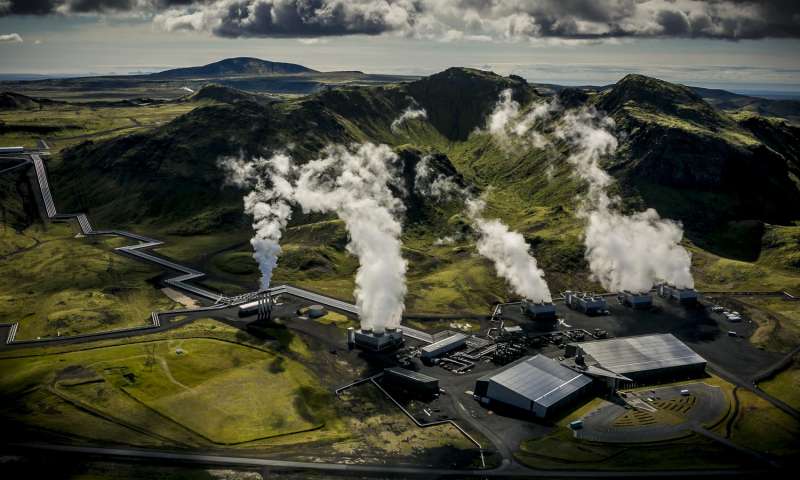An international team of scientists documented a potentially viable way to remove anthropogenic (caused or influenced by humans) carbon emissions from the atmosphere: by turning into rock.

No matter how much you talk and spin it around, the problem with global warming bounds down to one thing: we’re outputting too much greenhouse gas into the atmosphere, especially carbon dioxide (CO2). But what if we could somehow cheat, and trap that CO2 and lock it away somewhere where it wouldn’t do any damage? That’s what many teams believe is a key point of mitigating climate change, and that’s exactly what scientists working in Iceland have done.
The CO2 interacts with the surrounding rock, forming environmentally benign minerals. The entire process is quite fast, and it could perhaps be scaled.
Carbon Capture and Storage (CCS) is a field of science where CO2 is extracted from the atmosphere and stored underground. Geologists have mostly focused on existing voids, such as former oil fields, but that’s tricky because the fields are susceptible to leakage. So instead, they’re now turning to mineralizations – turning CO2 into minerals. Until now, this process was thought of as unpractical because it takes too long to solidify the CO2, but researchers from Columbia University, University of Iceland, University of Toulouse and Reykjavik Energy have found a way to make it work in two years.
Lead author Dr Juerg Matter, Associate Professor in Geoengineering at the University of Southampton, says:
“Our results show that between 95 and 98 per cent of the injected CO2 was mineralised over the period of less than two years, which is amazingly fast.”
They key is basalt – a volcanic rock which Iceland has an abundance of. The whole Iceland is made up of basalt (90%), and the rock is also rich in calcium, magnesium in iron – key elements for carbon mineralization. The process is straightforward: CO2 is dissolved in water and carried down the well. When it comes into contact with the rocks, it reacts and starts forming carbonate minerals. After two years, the carbon is completely trapped.
“Carbonate minerals do not leak out of the ground, thus our newly developed method results in permanent and environmentally friendly storage of CO2 emissions,” says Dr Matter, who is also a member of the University’s Southampton Marine and Maritime Institute and Adjunct Senior Scientist at Lamont-Doherty Earth Observatory Columbia University. “On the other hand, basalt is one of the most common rock type on Earth, potentially providing one of the largest CO2 storage capacity.”
Already, the project is storing 10,000 tonnes of CO2 a year and many other areas are highly rich in basaltic rocks, which means the same could be applied elsewhere.
“In the future, we could think of using this for power plants in places where there’s a lot of basalt and there are many such places,” said Martin Stute, at Columbia University in the US and part of the research team.
The big resource being used here is water – the process requires a lot of water, but thankfully, seawater can also be successfully used. Basalts are often found in proximity of oceans, so the problem could be solved with relative ease.
“The overall scale of our study was relatively small. So, the obvious next step for CarbFix is to upscale CO2 storage in basalt. This is currently happening at Reykjavik Energy’s Hellisheidi geothermal power plant, where up to 5,000 tonnes of CO2 per year are captured and stored in a basaltic reservoir.”
The project is part of research funded by the European Union. The investigation is part of the CarbFix project, a European Commission and U.S. Department of Energy funded programme to develop ways to store anthropogenic CO2 in basaltic rocks through field, laboratory and modelling studies.






